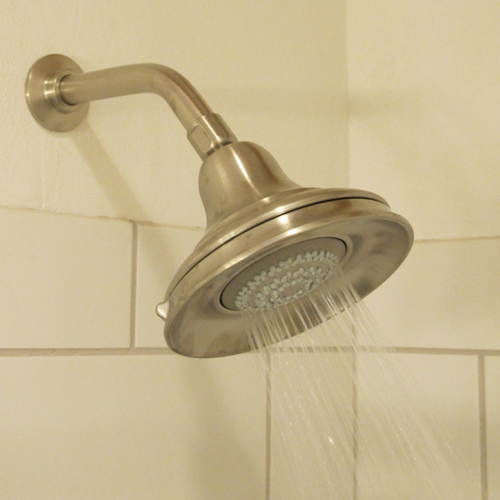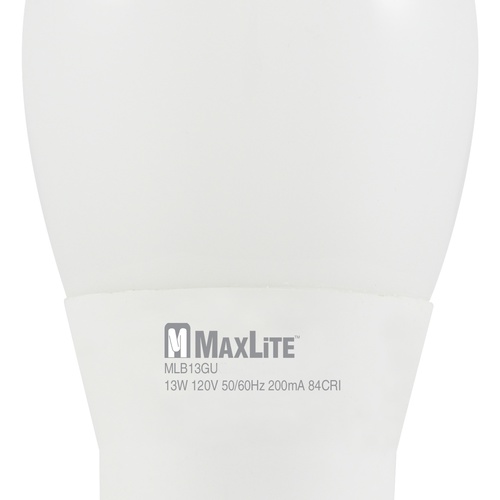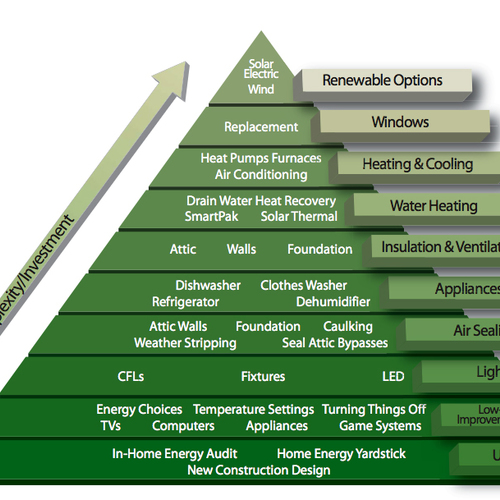
Image Credit: Alex Wilson
Some energy-saving strategies involve spending money: replacing appliances and lights with more energy-efficient products, tuning up a heating system, and insulating an attic, for example. Other measures don’t require any expenditure at all. Below is my top-ten list of easy, no-cost ways to reduce your energy use. If you’ve been reading my column regularly, these will all be familiar, but since it’s time for New Year’s resolutions maybe a quick review will give you the needed nudge to step up your efforts.
1. Drive less. For most of us, the single most effective way to reduce our energy consumption is to drive less. Walk more or ride a bike—you’ll benefit by spending less and keeping in better shape. Coordinate your travel with colleagues, sharing rides. Combine trips to town. Use public transit.
2. Turn off the lights. The least efficient lighting is a light that’s turned on when no one’s in the room. Get in the habit of turning lights off when leaving a room.
3. Turn down the heat. You don’t need a programmable thermostat to lower your temperature settings at night or when you head off to work; you can do that manually with a simple thermostat. Each degree of temperature setback will reduce your total heating costs by about 2%, according to the American Council for an Energy Efficient Economy; if that setback is for a portion of the day (say eight hours at night), the savings will be roughly proportional.
4. Take shorter showers. Water heating is often the second-largest energy consumer in a northern-climate home, so reducing hot water use is an easy way to save energy. One of those strategies is to shorten your showers. Some people also turn down the flow to a trickle while shampooing or soaping up to reduce hot water use (the “military shower”).
5. Wash clothes with cold water. Clothes washers, especially older top-loading models, use up to about 50 gallons per load. Washing clothes in cold water can dramatically reduce your energy consumption. If you must wash with hot water (and for getting some clothes clean, hot water does work better), at least set the washer to rinse with cold water.
6. Hang your clothes outdoors or use an indoor drying rack. Instead of using your electric or gas dryer, hang clothes outdoors. In the winter, you can hang clothes indoors and benefit from the humidity those drying clothes will provide.
7. Use your dishwasher efficiently. Run the machine with full loads. Scrape off food scraps, but with a relatively new dishwasher it’s usually not necessary to pre-rinse dishes before putting them in the dishwasher. If you must rinse (sometimes it’s necessary, especially with older dishwashers), use cold water.
8. Block drafts under doors. When I grew up, our house (a log home built in 1710) was always drafty, and we used a sand-filled “snake” against the bottom of the door, especially at night. I don’t see these very much today, but if your door doesn’t seal tightly at the threshold, these snakes still make sense, and they are easy to make from scrap materials.
9. Eliminate “phantom loads.” Most of us have lots of hidden electrical loads in our homes: cell phone and tool chargers that are always plugged in, televisions that are never totally “off,” and wireless routers that draw electricity 24-7, for example. Unplug these devices when not in use, or plug them into power strips that can easily be switched off.
10. Extend your energy savings to your workplace. If you’ve succeeded at doing the easy stuff at home, don’t stop there. Carry your energy-savings practices to work!
All of these measures are free. But they do require a little more awareness and forethought. Wishing you the best for the New Year!
P.S. I’m thrilled to report that I did receive a Sno Wovel for Christmas–the wheeled, back-saving snow shovel that I mentioned in last week’s Christmas gift column. It took about an hour to assemble, and I’m now anxiously awaiting a snowstorm to try it out. Can’t wait!
I invite you to share your comments on this blog. You can also follow my musings on Twitter
Weekly Newsletter
Get building science and energy efficiency advice, plus special offers, in your inbox.















3 Comments
Need for right programs for residential customer to change
Good list as it relates to change behaviors. Our study indicates, less than 2 percent of house hold will act to do what you suggested above and would result saving about 5 % reduction of energy consumption for those 1-2 % of households that would participate. To change the behavior properly some incentive (Smart Carrots) is needed, which should include Money ($), right message that is the right thing to do, and ways to deal with Ego/Competitions sprite/ Environment morality.
The incentives should be modified for different zip codes. At present only 2-3 utilities (out of 3000) are offering programs in this space.
Regards,
Hossein
Smart Carrots
Nice term...good concept
thank you Hossein
Sno Wovel
I guess someone really wovels you...
Log in or create an account to post a comment.
Sign up Log in